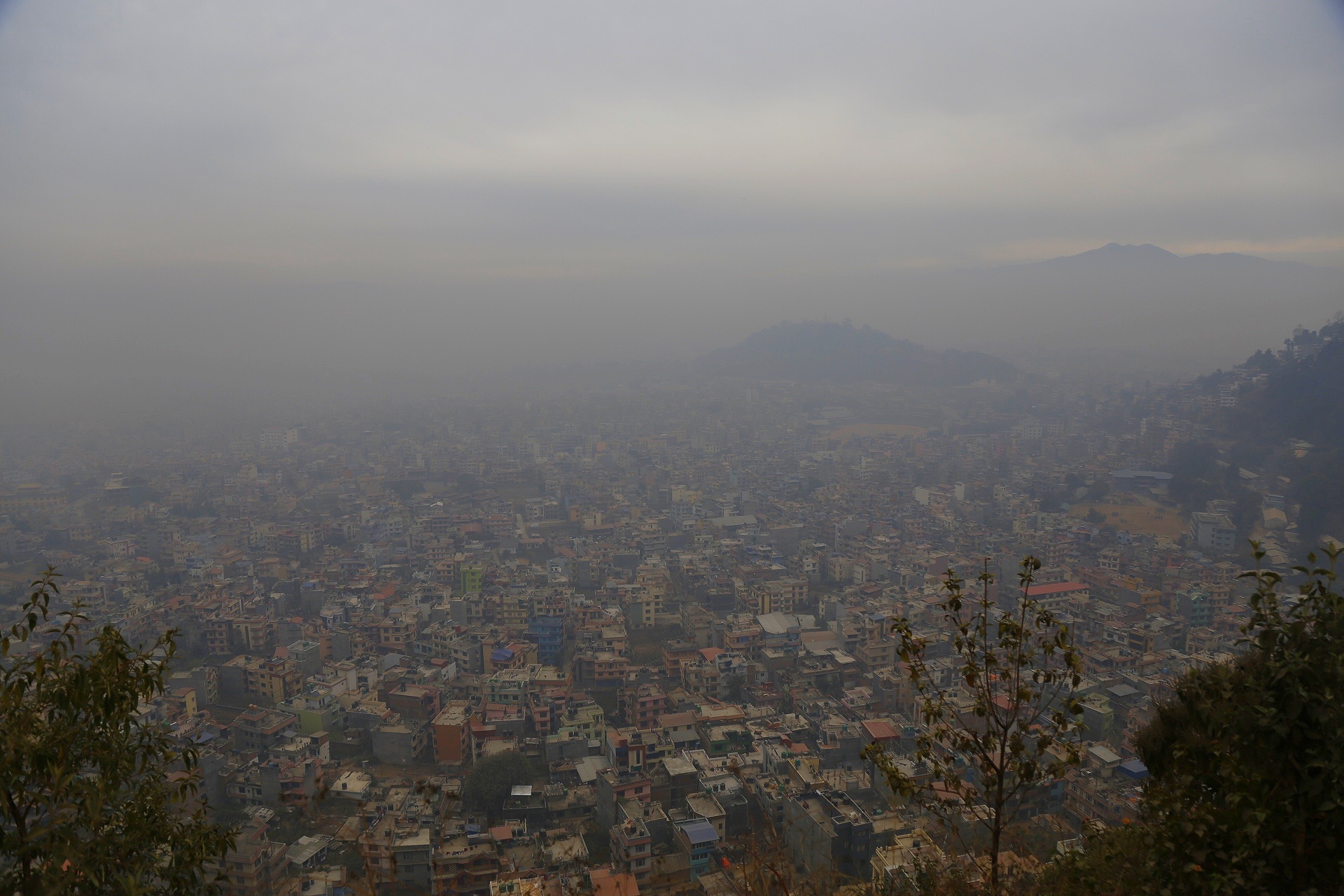Report on Minnesota Air Quality Crisis: An Analysis Through the Lens of Sustainable Development Goals
Executive Summary
An air quality alert has been extended for the entire state of Minnesota due to persistent wildfire smoke originating from Canada. This event presents significant challenges to public health, community resilience, and environmental stability, directly impacting the progress toward several United Nations Sustainable Development Goals (SDGs). This report analyzes the situation, its underlying causes, and the recommended public health responses, framing them within the context of SDG 3 (Good Health and Well-being), SDG 11 (Sustainable Cities and Communities), SDG 13 (Climate Action), and SDG 15 (Life on Land).
SDG 3: Good Health and Well-being – Public Health Under Threat
The primary impact of the wildfire smoke is on public health, posing a direct challenge to SDG 3. The Minnesota Pollution Control Agency (MPCA) has reported that fine particle levels are projected to reach the red Air Quality Index (AQI) category, a level deemed unhealthy for the entire population.
Official Health Advisories
- The MPCA has advised that sensitive groups should avoid prolonged or heavy exertion.
- A general recommendation has been issued for all individuals to limit time spent outdoors.
SDG 11: Sustainable Cities and Communities – Building Urban Resilience
The air quality crisis tests the resilience of urban areas and the capacity of local governments to protect residents, a key target of SDG 11. Community organizations are actively adapting to mitigate health risks.
Case Study: Minneapolis Parks and Recreation
- Staff responsible for ten city day camps are conducting daily monitoring of the AQI.
- In response to high AQI levels, camp activities are being adjusted to ensure the safety of children.
- Modifications include shifting from high-exertion games like kickball to lower-stress activities and incorporating indoor breaks.
SDG 13 & SDG 15: Climate Action and Life on Land – The Environmental Context
The source of the pollution—unprecedented wildfires in Canada—highlights the urgent need for climate action (SDG 13) and the devastating impact on terrestrial ecosystems (SDG 15).
Wildfire Analysis
- The Canadian Interagency Forest Fire Center attributes the fires to lightning strikes in dense, dry forests, conditions often exacerbated by climate change.
- The current wildfire season is reported as the second most active on record in Canada.
- The scale of destruction is immense, with approximately 15 million acres burned, an area comparable in size to the state of West Virginia. This represents a significant loss of forest ecosystems, directly undermining SDG 15.
Public Health and Safety Recommendations for SDG Attainment
The Minnesota Department of Health (MDH) has issued comprehensive guidance to protect citizens and workers, aligning with the principles of SDG 3 (Good Health and Well-being) and SDG 8 (Decent Work and Economic Growth).
General Public Guidance (SDG 3)
- Monitor Air Quality: Utilize official alerts and the AirNow mobile application to stay informed of current conditions.
- Remain Indoors: Keep windows and doors closed and use air conditioning or DIY air purifiers like a Corsi-Rosenthal box.
- Maintain Indoor Air Purity: Avoid activities that generate indoor pollutants, such as smoking, frying food, or burning candles.
- Outdoor Precautions: If outdoor activity is unavoidable, limit exertion and wear a well-fitting N95 or P100 respirator. Utilize vehicle air recirculation settings.
- Self-Care and Community Support: Monitor personal health, follow asthma action plans, and check on vulnerable neighbors.
Protection of Outdoor Workers (SDG 8)
To ensure safe working conditions for outdoor laborers, employers are advised to implement the following measures:
- Conduct frequent air quality monitoring.
- Consider rescheduling or relocating work during periods of poor air quality.
- Provide workers with access to clean air breaks and appropriate protective equipment.
1. Which SDGs are addressed or connected to the issues highlighted in the article?
-
SDG 3: Good Health and Well-being
The article directly addresses public health concerns arising from poor air quality. It mentions that fine particle levels are “unhealthy for everyone” and advises sensitive groups to “avoid prolonged or heavy exertion.” The Minnesota Department of Health provides extensive tips to protect oneself, including staying indoors, monitoring for health symptoms, and specific advice for people with asthma, which clearly links the issue to health and well-being.
-
SDG 11: Sustainable Cities and Communities
The article highlights the impact of air pollution on urban life. The air quality alert covers the entire state, including cities like Minneapolis. The article details how urban services, such as the “Minneapolis Parks and Rec” day camps, are forced to adjust their plans by monitoring the Air Quality Index (AQI) and modifying activities to protect children. This demonstrates the challenge of maintaining safe and resilient urban environments in the face of environmental hazards.
-
SDG 13: Climate Action
The root cause of the air quality issue is identified as “continued wildfire smoke from Canada.” The article notes that this is the “second most wildfire season on record in Canada,” and the fires are caused by “lightning strikes in dense, dry forests.” The increasing frequency and intensity of wildfires are widely recognized as a consequence of climate change. The article discusses community responses and adaptation measures, such as issuing alerts and adjusting daily activities, which are key components of strengthening resilience to climate-related hazards.
-
SDG 15: Life on Land
The article quantifies the devastating impact of the wildfires on terrestrial ecosystems, stating that they “have burned about 15 million acres in total.” This massive loss of forest land directly relates to protecting, restoring, and promoting the sustainable use of terrestrial ecosystems and sustainably managing forests. The cause being “dense, dry forests” also points to issues of forest health and management.
2. What specific targets under those SDGs can be identified based on the article’s content?
-
Target 3.9: By 2030, substantially reduce the number of deaths and illnesses from hazardous chemicals and air, water and soil pollution and contamination.
The entire article is centered on the health risks of air pollution from wildfire smoke. The issuance of an “air quality alert,” the classification of the air as “unhealthy for everyone,” and the detailed health advice from the Minnesota Department of Health are all measures aimed at preventing illnesses caused by exposure to fine particulate matter in the air.
-
Target 11.6: By 2030, reduce the adverse per capita environmental impact of cities, including by paying special attention to air quality and municipal and other waste management.
The article focuses on the management of air quality within Minnesota, particularly affecting its cities. The actions of the “Minnesota Pollution Control Agency (MPCA)” and the “Minneapolis Parks and Rec” staff, who “monitor air quality for the 10 different daycamps around the city,” are direct efforts to manage and mitigate the adverse environmental impact of poor air quality on the urban population.
-
Target 13.1: Strengthen resilience and adaptive capacity to climate-related hazards and natural disasters in all countries.
The response to the wildfire smoke is a clear example of building adaptive capacity. The MPCA’s system of issuing and extending air quality alerts, the daily monitoring by city staff, and the public guidance on how to adjust behavior (e.g., “limit their time spent outdoors,” “taking breaks inside”) are all strategies to strengthen resilience against the natural disaster of widespread wildfire smoke.
-
Target 15.2: By 2020, promote the implementation of sustainable management of all types of forests, halt deforestation, restore degraded forests and substantially increase afforestation and reforestation globally.
The article’s mention that the Canadian wildfires have “burned about 15 million acres in total” directly relates to the loss of forests. While the article doesn’t detail forest management strategies, it highlights the massive scale of forest destruction, which is a core concern of this target. The mention that “each province and territory has their own approach to how they manage wildfires” points to the ongoing challenge of sustainable forest management in the face of increasing fire risk.
3. Are there any indicators mentioned or implied in the article that can be used to measure progress towards the identified targets?
-
Indicator for Target 3.9: Air Quality Index (AQI)
The article repeatedly refers to the “Air Quality Index (AQI)” as the primary tool for measuring the level of pollution. It specifies that levels are expected to reach the “red Air Quality Index (AQI) category, which is considered unhealthy.” Monitoring and aiming to reduce the number of days with high AQI levels is a direct way to measure progress towards reducing illnesses from air pollution.
-
Indicator for Target 11.6: Annual mean levels of fine particulate matter (e.g., PM2.5) in cities
The article’s focus on “fine particle levels” is a direct reference to particulate matter, which is the basis for the AQI. The daily monitoring of the AQI in Minneapolis, as described by the Parks and Rec staff, serves as a proxy for this official indicator. Tracking these levels over time would measure the city’s air quality.
-
Indicator for Target 13.1: Number of countries and local governments that have adopted and implemented local disaster risk reduction strategies
The article provides examples of such strategies being implemented. The “Minnesota Pollution Control Agency (MPCA)” extending an “air quality alert for the entire state” is a state-level strategy. At the local level, the Minneapolis Parks and Rec’s policy of “checking the AQI daily” and adjusting camp plans is an implemented local strategy. The “Minnesota Outdoor Air Quality Guidance for Schools and Child Care” is another documented strategy.
-
Indicator for Target 15.2: Progress towards sustainable forest management
The article provides a direct metric of forest loss: “The wildfires in Canada have burned about 15 million acres in total.” This figure serves as an indicator of the extent of forest degradation and loss due to natural disasters, which is a key component in assessing progress toward sustainable forest management. A reduction in the area burned in future seasons could indicate improved management and resilience.
4. Summary Table of SDGs, Targets, and Indicators
| SDGs | Targets | Indicators |
|---|---|---|
| SDG 3: Good Health and Well-being | Target 3.9: Substantially reduce illnesses from air pollution. | Measurement of air pollution levels using the Air Quality Index (AQI), specifically the “red Air Quality Index (AQI) category.” |
| SDG 11: Sustainable Cities and Communities | Target 11.6: Reduce the adverse per capita environmental impact of cities, paying special attention to air quality. | Monitoring of “fine particle levels” in urban areas like Minneapolis. |
| SDG 13: Climate Action | Target 13.1: Strengthen resilience and adaptive capacity to climate-related hazards. | Implementation of disaster risk reduction strategies, such as the issuance of “air quality alerts” and specific guidance for schools, day camps, and outdoor workers. |
| SDG 15: Life on Land | Target 15.2: Promote sustainable management of all types of forests and halt deforestation. | Area of forest affected by natural disasters, specifically the “15 million acres” burned by wildfires. |
Source: kstp.com







